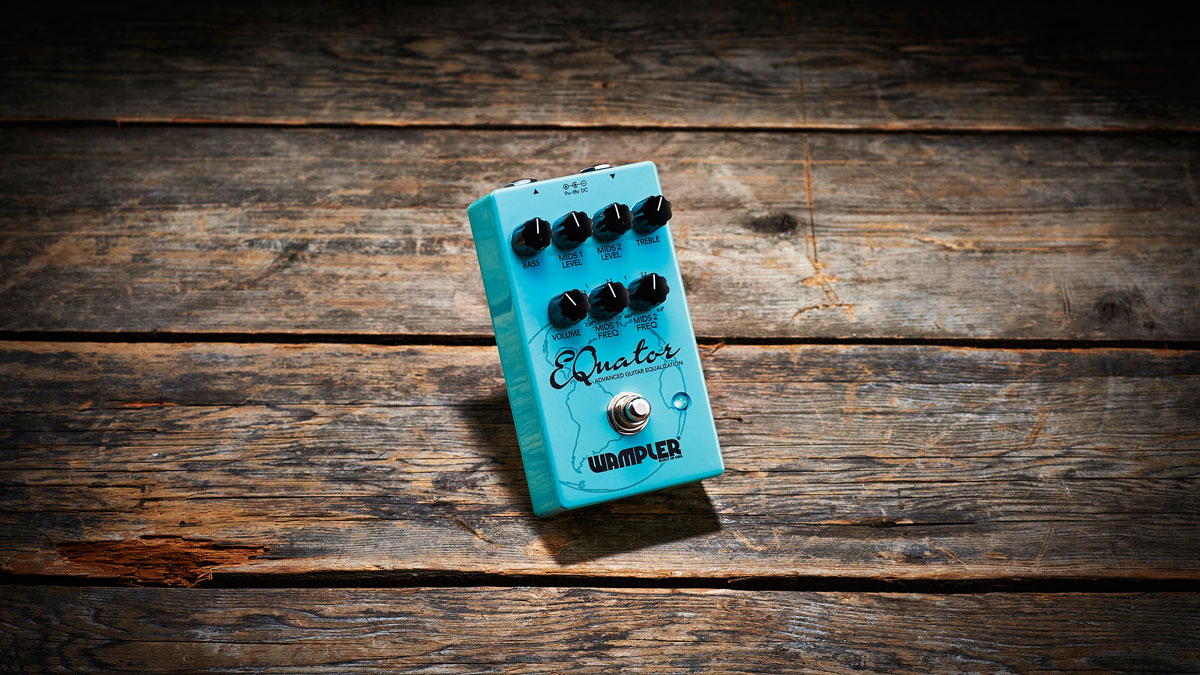MusicRadar Verdict
Utilitarian it may be, but there aren’t many more versatile pedals if you have the ’board space.
Pros
- +
Well-chosen parameters for the EQ bands, volume knob to set appropriate output levels.
Cons
- -
No detents or markings on the pedal surface to help line up the knobs for zero cut/boost.
MusicRadar's got your back
The thought of adding an equaliser pedal to your board might not get the pulse racing like, say, a Germanium fuzz pedal or the latest multi-faceted delay, but a well-sorted EQ can work wonders on your tone and give you plenty of options whether you want to enhance the sound of your pickups, alter the tonal range of your amp/speaker set up or add an extra voice to a favourite drive pedal.
The EQuator gives you active four-band EQ with Bass and Treble boosts/cuts at a fixed frequency and two semi-parametric mid bands, all passing through a volume knob allowing you to deliver the EQ louder or softer.
Wampler has voiced this pedal with just the right frequency adjustments for guitar - immediately apparent with the Bass knob that offers 19dB of cut or boost at 130Hz, a frequency that typifies the low end thump of a 4x12 cab. If your amp has smaller speakers and you want some of the flavour of a bigger cabinet you can dial in a boost but, by contrast, if you want to tighten up your cabinet’s response a cut will get you there.
The Treble knob is similarly practical. Operating at 7kHz, it’s at the upper limit of what you’d be getting out of a speaker cab and is there to enhance that glassiness or chime or reduce it for a mellower top end.
The two semi-parametric mid bands have loads of power for effective tonal shaping over a wide frequency range and complement each other well. One has a narrower bandwidth (Q), and the potential for more dramatic amounts of cut/boosts, than the other, which offers broader and shallower contours.
With easy midrange tweaks you can emulate a cocked wah, scoop out frequencies for a Fender Blackface vibe or deliver a Tubescreamer’s signature hump (easily found by the 723Hz marker on the pedal). With a low setting of the volume knob, some mids taken out and the other knobs set to taste, you can even kick the pedal in to clean up a driven amp.
Trevor Curwen has played guitar for several decades – he's also mimed it on the UK's Top of the Pops. Much of his working life, though, has been spent behind the mixing desk, during which time he has built up a solid collection of the guitars, amps and pedals needed to cover just about any studio session. He writes pedal reviews for Guitarist and has contributed to Total Guitar, MusicRadar and Future Music among others.
Baby Audio's Smooth Operator spectral balancing plugin goes pro
"It was ugly, like watching a divorce between four people. After a while, I had to get out": Beatles engineer Geoff Emerick on the recording of Abbey Road, track-by-track
"I said, “What’s that?” and they said, “It’s what Quincy Jones and Bruce Swedien use on all the Michael Jackson records": Steve Levine reminisces on 50 years in the industry and where it’s heading next











